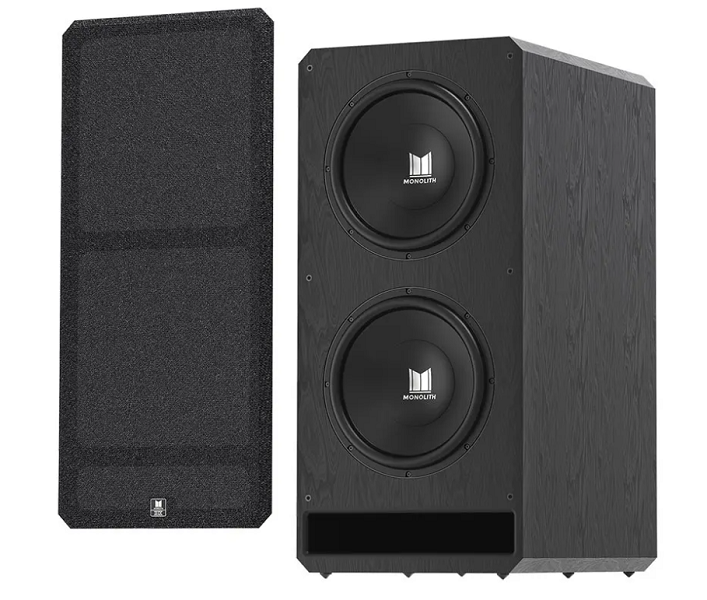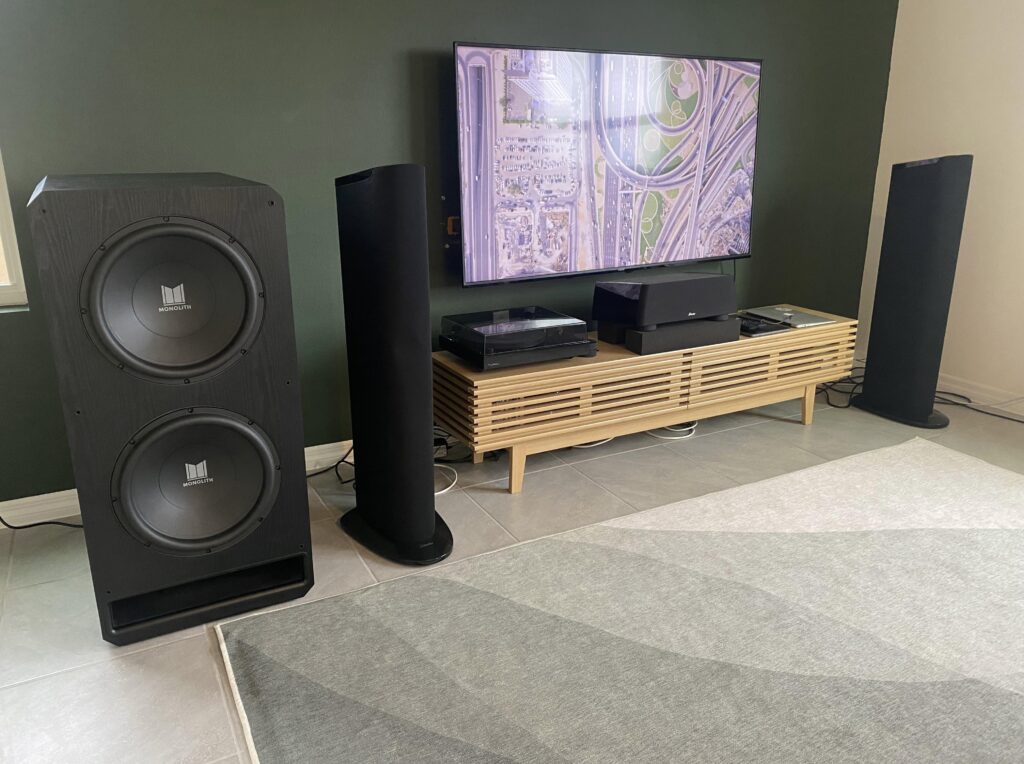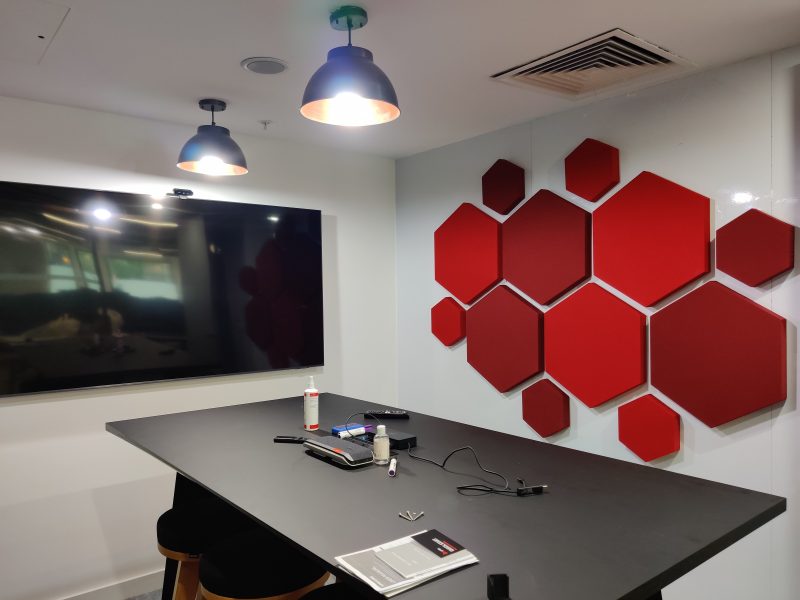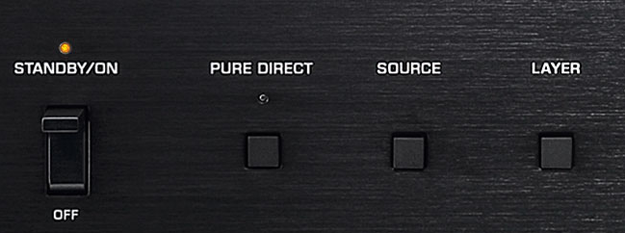Planning Vs. Experimentation In Home Theater
Most people’s home theater planning is like blindly throwing a dart at a dartboard and hoping you will get the desired effect. They don’t understand planning vs. experimentation in home theater. And I am guilty of this. My first stab at a home theater in my new space was an exercise in “planning” that, in reality, was experimentation. How so? I wanted all my cables inside the wall. My walls didn’t allow proper placement, so I stuck ’em on the ceiling with mounts. I planned their placement but didn’t get the effect I expected. Why?
Easy, I didn’t experiment while I had the walls open and could change things. So I put the speakers where I thought they should be and didn’t even think to listen first. Had I taken a few minutes to set up the speakers in their “planned” location and played a movie, I would have quickly heard that having speakers that close to the ceiling was not ideal. And yes, I did eventually move them. But that cost me more in the long run. Let’s discuss.
Planning Vs. Experimentation: Speaker Placement
So I touched briefly on speaker placement in my opening example, but this is one of the most straightforward planning vs. experimentation things you can do. Why? Speaker wire is cheap and moving speakers around only costs you time and effort. And maybe a friend to hold a speaker in place.
Where is the best place for your subwoofer? Well, throw it in a bunch of places and play some sweeps. What placement sounds best through most of the seats? Or you can do the venerable subwoofer crawl and move around the room.

The same logic applies to your placement of left-center-right, surround, and Atmos speakers. You can experiment with placement before running room correction or installing acoustic panels. It took me about 30 minutes of moving my bookshelf speakers closer and further to the wall before I was pleased with their placement. Put your surround speakers on a ladder and move them around. And have your buddies hold Atmos in the general place they need to be. Just make sure you have beer as payment!
And here is a pro tip. Once you find the perfect place for your floor-level speaker’s placement, mark it with a small piece of masking tape. Or take measurements from the wall and pictures and save them on your computer.
Planning Vs. Experimentation: Screen Size
So of all the things I wish I had experimented with before I planned, screen size is up there. Before I got back into home theater seriously, I had a 37″ LCD and home theater in a box – don’t judge! So when I was planning for my home theater, I planned on getting a 55″ tv! And coming from a 37″, that was a HUGE upgrade. Until it wasn’t.
Oh, how I wish I had experimented with panel size by making a masking tape outline on my wall of 55″ and 65″ panels. I would have quickly seen that 55″ was incredibly underwhelming and had a terrible field of view. The same logic applies if you wonder if a TV is too big for your wall. Throw up a tape outline and see how it looks. If you have to continually move your head or eyes to take it all in, it’s too big.

What about projector screens? Getting a giant screen in the planning stage is tempting. But slow down. Get your projector in its approximate location and throw an image on the wall. Play with your projector’s different sizes and see what looks best for your space. After experimenting, measure the wall and get the screen that matches that size. By experimenting before you plan, you will get the best screen for your room.
Planning Vs. Experimentation: Subwoofers
Ok, so it’s tempting to go out and buy a couple of massive black boxes for your room. On paper, a Monolith Dual M-15 doesn’t seem that big at 28″ x20″ x42″. Until they arrive on pallets, and you wonder how you will get them into the house, let alone blend them into your room!




Thank you to u/jakelemt on Reddit for allowing me to use the photos of his Monoprice Dual M-15’s!
If you did some arts and crafts and built a cardboard box with the exact dimensions of the subwoofer, you could see if that subwoofer would fit in your room. Yes, you could do a tape outline, but it doesn’t show how physically imposing the subwoofer is in three dimensions.

Planning Vs. Experimentation: Paint
The correct color paint in your room, especially if you have a projector, is vital. You want to choose a paint that will minimize reflected light, but you also need to blend aesthetics. While an all-black room would be ideal, it’s not practical! And add day-to-day considerations like durability and washability, and your choice can become even harder.
So how do you experiment before you plan? Easy, get some test samples or swatches. I have an entire book of paint swatches we used when picking a color. Have you ever wondered how many shades of grey there are? A lot! And guess what? Not every gray works with a black wall!

But once you plan your paint color, do some more experimentation. Most paint stores will give you small cans of sample paint so that you can throw the paint on the wall. I have three small test cans in ultra-matte, matte, and eggshell finishes to see what they look like on the wall. And if you genuinely want to find out what they wear like, let them dry and cure and then touch/wash/abuse the paint to see how durable it is.
Planning Vs. Experimentation: Seating
Of all the things that you need to experiment with before you plan, seating tops the list. It’s easy to look at a website, read reviews, and convince yourself that your choice is excellent. That is until you plunk your butt down and realize you made a massive mistake. That’s right, you now just took all the time, effort, and cursing to get your new home theater seating setup and realize it’s uncomfortable.

So how do you experiment with seating? The old-fashioned way. You go to a store and sit down on it. And yes, some companies are Internet direct and don’t have a physical storefront. So in those cases, research and find out what their return policy is. For example, you may be on the hook for return shipping or a hefty restocking fee if you return it.
Planning Vs. Experimentation: Acoustic Treatments
Again, it’s easy to look at your room and think, I know exactly where I will put my acoustic panels. But how will you know where they must be until you get your speakers in the correct spot, the subs set up, and your sofa, rugs, etc., in place? The answer is that you won’t.
There are many ways to determine where your first reflection points are. One tried and tested method is to have a friend slide a mirror along the wall while you are in your primary listening position. When you see the speaker in the mirror, that is your first reflection point, and you put a panel there.

But what if you can’t put a panel there? What else can you do? You can throw a panel in different places to see if there is a positive impact on the sound. Most panels are light enough that you can hang them temporarily with a nail, and you can experiment.
I played with panel placement before I repainted my walls. And then, I patched any small holes with drywall compound to hide them. But I doubt you would see the spots anyway. So throw in a small nail and experiment away. If you want to go that extra mile, get some REW measurements and measure the difference!
Planning Vs. Experimentation: Sound Modes
This one is a no-brainer. You have the proper placement. The panels are now in the right place, and you have the comfiest seats to chill in. So go ahead and play with your receiver and try the different up-mixers and surround modes.

It won’t cost you a cent, and there is almost zero chance you can screw anything up. And even if you did, you can factory reset your AV receiver and start again. I have spent hours switching between modes. Looking to hear if there is an audible difference between movie and game modes and playing with two channels.
Our Take
So while planning is critical to the home theater experience, experimentation is more important. You can eliminate costly design choices or purchases by experimenting before firming up your plan. And in most cases, experimentation is low or no cost.



Nice article, Andrew.
I don’t know if someone else has mentioned this, but along the lines of using a cardboard box to see how big a subwoofer would be, my wife and I flattened out some cardboard boxes into the dimensions of the TV size we were considering.
Since we were going to be placing the TV on a stand, we wanted an idea of what it would look like on the stand and how tall it would be. Like you said with the sub, it will really bring into focus how the TV will be positioned in the room.
I thought this might help other people trying to make the same decision.
Great suggestion!